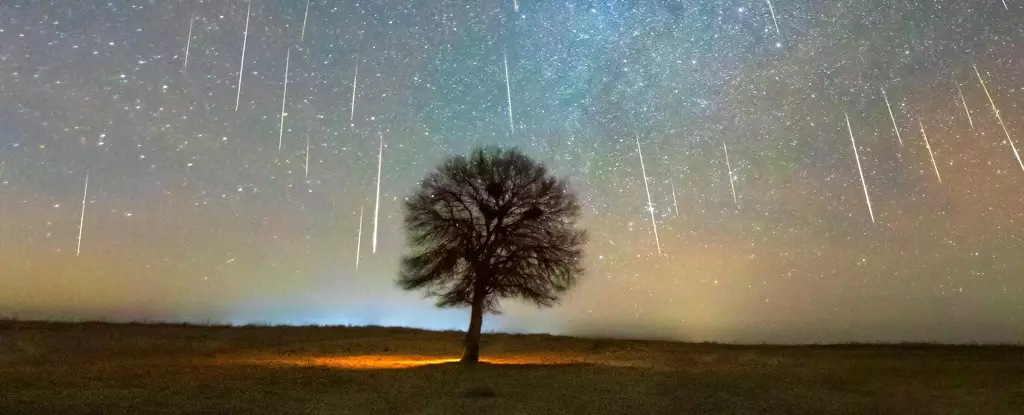Every year, astronomers and meteor enthusiasts eagerly await the arrival of the Geminid meteor shower. Dubbed as the best natural fireworks display of the year, this extraordinary celestial event never fails to captivate people from all corners of the world. As December approaches, anticipation grows as the Earth prepares to pass through streams of dust and debris left behind by asteroids and comets, giving birth to the mesmerizing Geminids. This year’s display promises to be even more exceptional, as the peak falls on a new Moon, ensuring a beautifully dark sky throughout the night.
The Geminid meteor shower is a result of Earth passing through a stream of debris left by an asteroid named (3200) Phaethon. This peculiar celestial object follows a highly elongated orbit, bringing it closer to the Sun than Mercury at times and farther away than Mars at others. The extreme temperature fluctuations cause its surface to shatter, leading to the release of dust particles into space. Over time, these dust particles have spread throughout Phaethon’s orbit, creating a cosmic highway of debris. When Earth intersects this stream during its journey around the Sun, the Geminids are born.
While the Geminid meteor shower lasts for several weeks, it is during the two to three nights around mid-December that the event reaches its peak intensity. From the northern hemisphere, lucky stargazers can witness more than 100 meteors per hour at the shower’s pinnacle. Even in the southern hemisphere, enthusiastic observers can still enjoy a mesmerizing display with over 50 meteors visible per hour. However, to witness the meteor shower, one must wait until the constellation Gemini rises above the horizon. The farther north you are, the earlier in the evening Gemini will make its appearance.
To maximize your chances of seeing the Geminid meteors, it is crucial to locate the radiant, which is the point in the sky from which the meteors appear to radiate. By facing the radiant, one can directly observe the meteors head-on. For the Geminids, tracing their movement back to the constellation Gemini is the key to a remarkable viewing experience. To optimize your meteor-spotting adventure, position yourself at about a 45-degree angle from the ground and lie down for the best visibility. Turning your gaze approximately 45 degrees to the left or right of the radiant will enhance your chances of witnessing a breathtaking cosmic spectacle.
To make the most of this celestial wonder, it is essential to plan your viewing time and location. The table below provides the rising and culmination times for the radiant on the evening of December 14, ensuring you are ready to witness the peak of the Geminid meteor shower. Although the highest meteor rates occur during the four-hour period centered on the culmination of the radiant, meteors can still be spotted even hours after the peak. However, factors such as light pollution, cloud cover, and eyesight quality can influence visibility. Therefore, finding a dark, crystal-clear sky away from urban areas will significantly enhance your chances of experiencing the full splendor of the Geminids.
The Geminid meteor shower provides a monumental visual feast for astronomers and meteor enthusiasts alike. Share the magic of this celestial extravaganza with friends and loved ones, as it becomes an even more memorable experience when witnessed together. Consider planning a camping trip to a remote location with minimal light pollution, as Australia’s summer season offers ideal weather for outdoor excursions under the starry night sky. For a comprehensive guide to Australia’s most and least light-polluted locations, refer to this extraordinary map to find the perfect viewing spot.
The Geminid meteor shower is nature’s way of enchanting us with its cosmic spectacle. As the Earth dances through the debris left behind by Phaethon, each grain of dust gracefully ignites the sky, leaving a trail of fleeting beauty. Don’t miss the opportunity to witness this awe-inspiring display of celestial fireworks and make this December a truly magical time of the year.


Leave a Reply